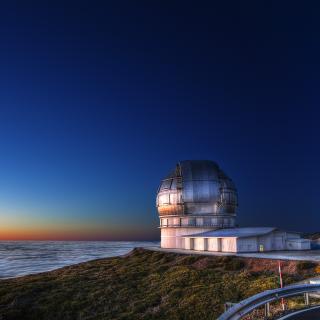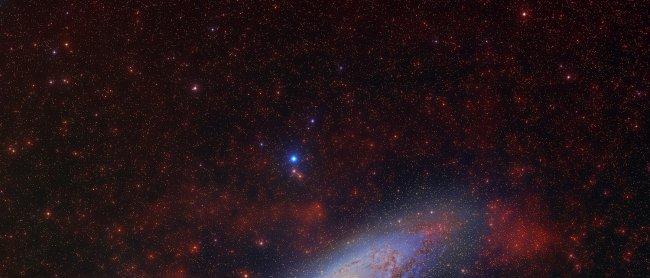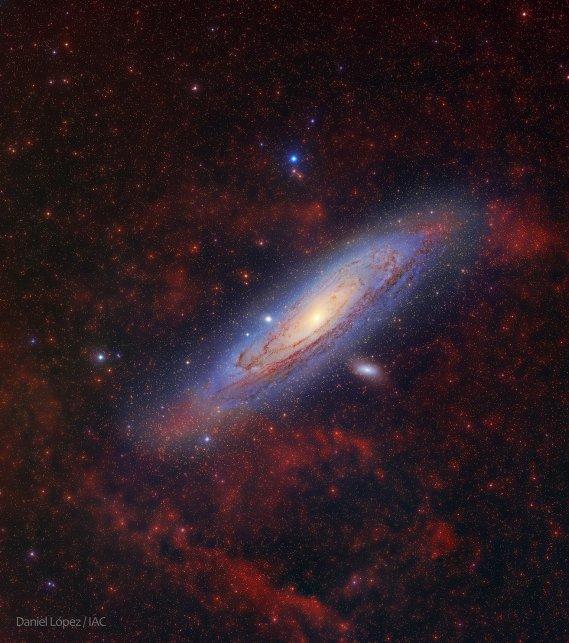It may interest you
-
 El equipo de IACTEC-Espacio , la división del Instituto de Astrofísica de Canarias (IAC) dedicada al desarrollo de tecnología espacial, participa esta semana como expositor en el Small Satellites & Services International Forum (SSSIF) 2025, celebrado en Málaga, consolidando su posición como referente en el sector espacial español. El evento, clave para la industria de pequeños satélites, está sirviendo de plataforma para presentar proyectos innovadores y establecer colaboraciones estratégicas en especial sobre los proyectos DRAGO, los instrumentos canarios con capacidad de detectar imágenesAdvertised on
El equipo de IACTEC-Espacio , la división del Instituto de Astrofísica de Canarias (IAC) dedicada al desarrollo de tecnología espacial, participa esta semana como expositor en el Small Satellites & Services International Forum (SSSIF) 2025, celebrado en Málaga, consolidando su posición como referente en el sector espacial español. El evento, clave para la industria de pequeños satélites, está sirviendo de plataforma para presentar proyectos innovadores y establecer colaboraciones estratégicas en especial sobre los proyectos DRAGO, los instrumentos canarios con capacidad de detectar imágenesAdvertised on -
 The Instituto de Astrofísica de Canarias (IAC) is one of the international researches centres which is following actively the asteroid 2024 YR4 which has been qualified by the United Nations (UN) as potentially dangerous, because it has a 1.5% probability of impacting the Earth during 2032.The asteroid was discovered in 2024 and has an estimated size of between 40 and 90 metres. Given these figures, the UN has activated the protocols of planetary defence to obtain more accurate estimates of the orbit, the size and the threat which might be presented by 2024 YR4. The protocols of the UN areAdvertised on
The Instituto de Astrofísica de Canarias (IAC) is one of the international researches centres which is following actively the asteroid 2024 YR4 which has been qualified by the United Nations (UN) as potentially dangerous, because it has a 1.5% probability of impacting the Earth during 2032.The asteroid was discovered in 2024 and has an estimated size of between 40 and 90 metres. Given these figures, the UN has activated the protocols of planetary defence to obtain more accurate estimates of the orbit, the size and the threat which might be presented by 2024 YR4. The protocols of the UN areAdvertised on -
 The Instituto de Astrofísica de Canarias (IAC) announces the arrival of the Astronomy on Tapinternational talk series in Spain, with its very first edition to be held in Tenerife. This outreach initiative, which was created in the United States and has since expanded worldwide, will now take place in the Canary Islands under the name "Astronomy on Tap – Canary Islands” and the local nickname “AstroTragos,” and is carried out within the framework of the EDUCADO and ExGal-Twin projects at IAC. The debut event will be held at the Búho Club (Calle Catedral, 3, La Laguna, Tenerife) on ThursdayAdvertised on
The Instituto de Astrofísica de Canarias (IAC) announces the arrival of the Astronomy on Tapinternational talk series in Spain, with its very first edition to be held in Tenerife. This outreach initiative, which was created in the United States and has since expanded worldwide, will now take place in the Canary Islands under the name "Astronomy on Tap – Canary Islands” and the local nickname “AstroTragos,” and is carried out within the framework of the EDUCADO and ExGal-Twin projects at IAC. The debut event will be held at the Búho Club (Calle Catedral, 3, La Laguna, Tenerife) on ThursdayAdvertised on

